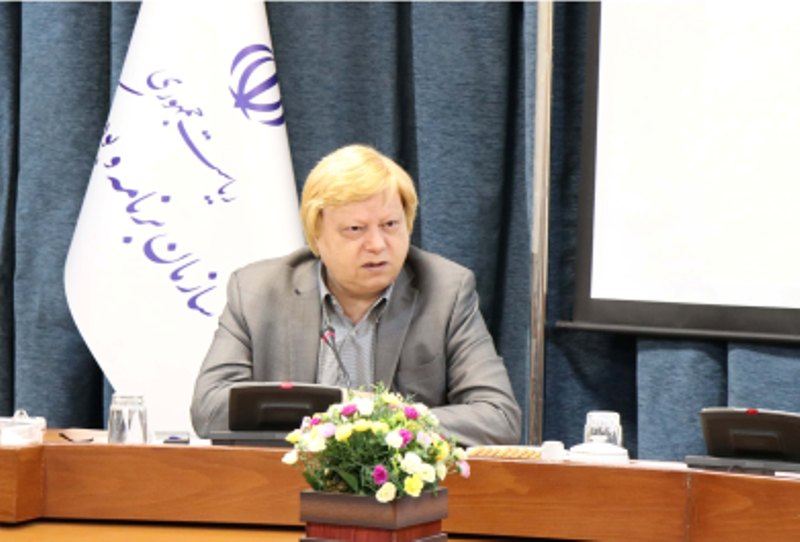
According to the Public Relations Office of the Research Institute of Cultural Heritage and Tourism (RICHT), Seyed Mohammad Beheshti made the remarks while addressing the 10th session of the specialized meeting on “Where Is Iran, Who Is Iranian” held at the Plan and Budget Organization.
While referring to a number of characteristics of the Iranian culture, he attributed such features to the placement of this land in the middle of the universe and its being global.
Noting that Iran is in the middle of universe, he said the land of Persia was located among four cultural regions of the world and study of historical documents of the Roman period shows that in those days the Mediterranean Sea, the land of Persia, parts of Africa, India and China were the known areas.
According to him, archeological explorations show that Iran is located in the middle of the lands where for the first time in the Neolithic period man-made stone tools and later bronze tools were used.
As for the dispersion of human beings on the Planet Earth, he said: “If we assume that the intelligent human being, our ancestors, left Africa 65 thousand years ago and settled in Iran about 60 thousand years ago, such settlement in other parts of the world such as Europe and East Asia took place much later and such a dispersion occurred from the Iranian plateau.
He also regarded Iran as a botanical crossroads from the point of view of botanists and said: “There are some plant species from different continents in Iran, therefore in Mazandaran, Gilan and Azarbaijan regions, European herbaceous species and in Baluchestan Hindi plant species could be found.
Pointing to the non-global status of Iran in the contemporary world, Beheshti said once Iran had a remarkable and strong status in the world and although global events have been effective in the present isolation of Iran, its other reason should be sought in the type of occupation of the lands by the Iranians.
“The Iranians would not leave much effective works after the occupation of the lands so that their footprints could be easily followed. For example, the first Catholic Church which was built in the late 16th century in Beijing is quite European as if the building has been brought to Beijing from the heart of Europe,” he added.
Referring to the Zaryab’s statute in Cordoba, Spain, he said Zaryab was an Iranian artist and thinker who left Baghdad for Cordoba and an important part of the life style of the Umayyad Spaniards and then the Europeans was emulated from him and the Spaniards would imitate his movements and dress and also a great part of the Spanish music is indebted to him.
Beheshti referred to the existence of multiple evidence indicating interactions of the Vikings with the people of Iran in the Scandinavian countries, and said there are many fabrics with the design of “Allah” that are on display at different museums on the Vikings in Denmark, Sweden and Norway.
He also referred to the presence of Muslims in West Africa and said: “Iranian sailors would bring Muslims for Haj pilgrimage to Mecca and Jeddah, and in this way Islam was promulgated in West and deep in Africa.
Elsewhere in his remarks, he pointed to the existence of baths in Zanzibar, Africa, which are similar to those of the Iranians, and announced the existence of many works by the Iranians in the Sassanid era and the Shiites of the Islamic period in Yemen.
According to him, today the only living Manichaean temple is located in a harbor in China which has kept alive Manichaeism which was spread from Babylon.
Beheshti referred to the challenge between “becoming global” and “globalization”, and said so far globalization has been the victor, stressing that the Iranians are global as the scope of their interactions would involve almost the entire of the civilized world in historical terms.
He referred to the screening of the first film in St. Petersburg in 1896, in Iran in 1899 and in Turkey in 1914 and said this is an indication of Iran’s open arms to the global developments.
The head of the Research Institute of Cultural Heritage and Tourism referred to the arrival of different cultures to meet the Iranians due to Iran being in the middle of the world, and said as they could not be like the Iranians, therefore, the Iranians should take care of them and show tolerance.
“Cyrus in Babylon allowed anyone, including the Jews, to keep their religion, and the Jews who were the followers of the Jewish religion returned to their promised land, and the merchants and businessmen in Babylon which was the center of the world trade, remained and people from the Jewish esoteric doctrines accompanied Cyrus to Iran and scattered throughout the land,' Beheshti added.
He cited the 30th Tir Street in Tehran as an example of tolerance and referred to the presence of mosque, synagogue, church and fire temple in that street.
He said not only one church, but there are several churches of different Christian sects in that street, adding that tolerance has resulted in the free presence of all religions along each other.
9376**2050
Follow us on Twitter @IrnaEnglish
 solhkhabar | Peace International News Agency Peace International News Agency , Peace News , International Agency News of Peace
solhkhabar | Peace International News Agency Peace International News Agency , Peace News , International Agency News of Peace